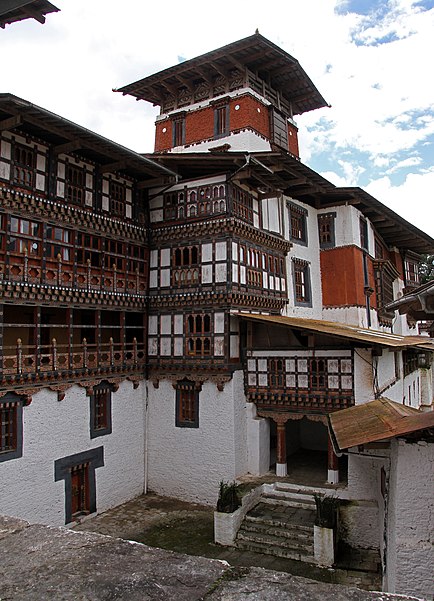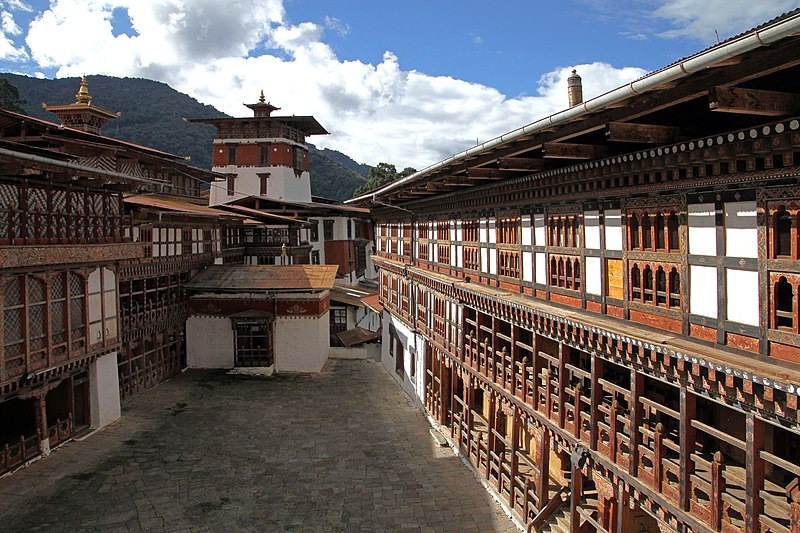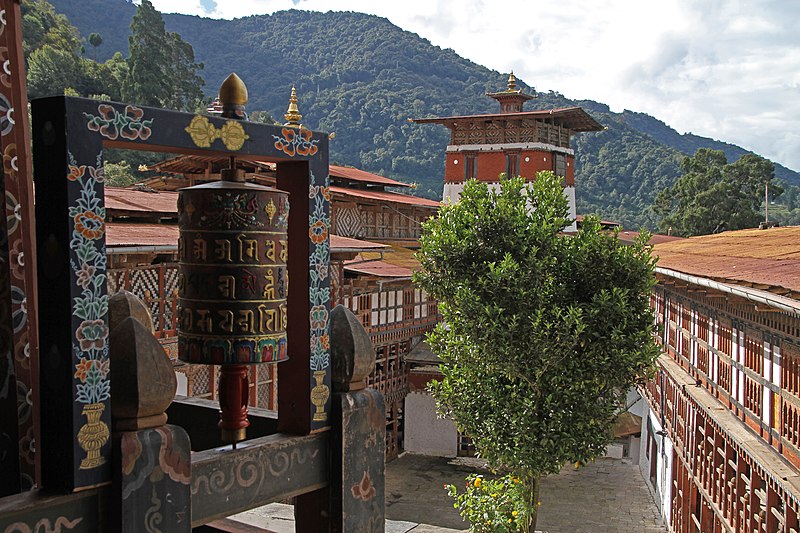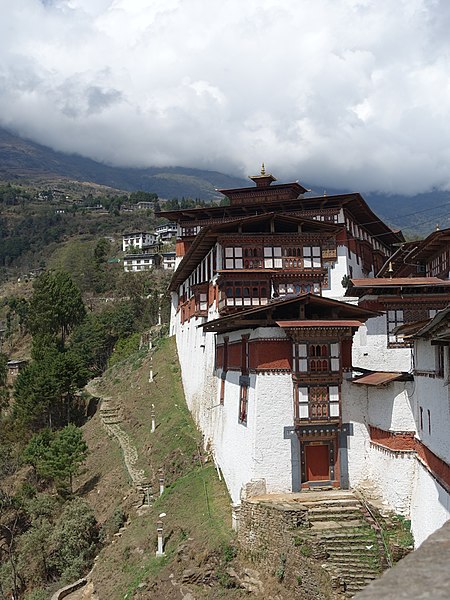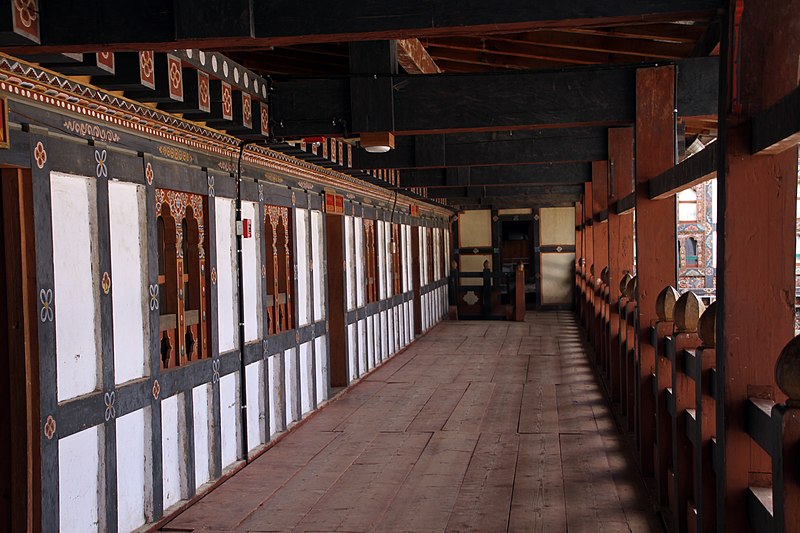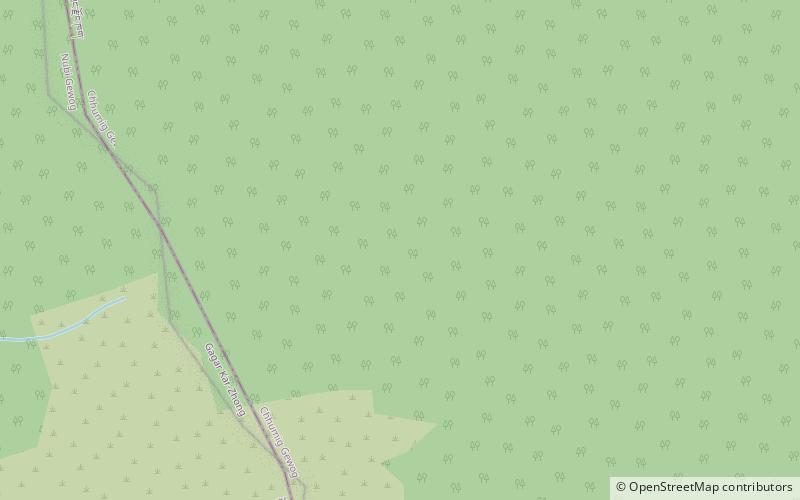Trongsa Dzong, Trongsa
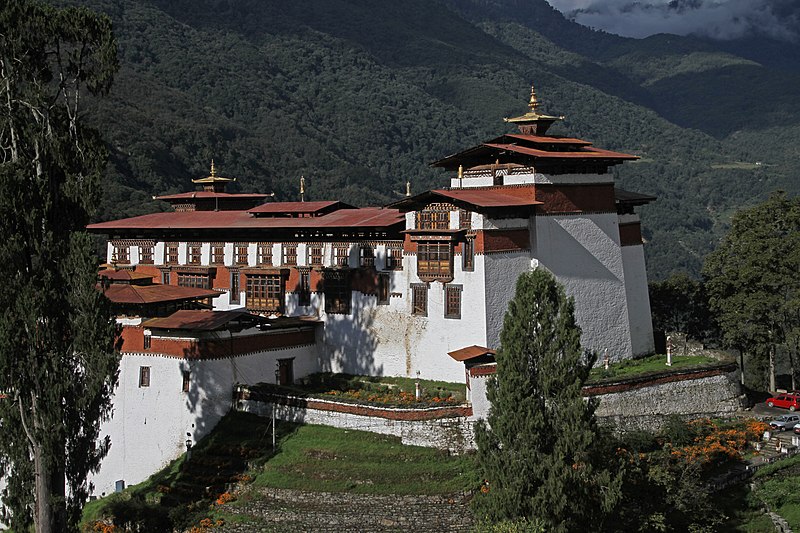
Facts and practical information
Nestled in the heart of Bhutan, Trongsa Dzong stands as an architectural marvel and a testament to the country's storied past. This grand fortress, serving as a government office, is not only a hub of administrative activity but also a focal point of monastic life in the quaint city of Trongsa.
Constructed in 1647, Trongsa Dzong's strategic location on a steep ridge offers a commanding view of the surrounding valleys. The dzong's significance is deeply rooted in Bhutanese history, as it was from this fortress that the first two hereditary kings ruled the nation. The architecture is a remarkable example of Bhutanese craftsmanship, with its intricate woodwork and classic whitewashed walls that embody the traditional style of the region.
For tourists, a visit to Trongsa Dzong is an immersive experience into the culture and history of Bhutan. The dzong is accessible through a series of stone steps that ascend the ridge, providing a serene approach to the entrance. Inside, visitors can explore the series of courtyards, temples, and administrative offices, each telling a story of Bhutan's religious and political evolution.
One of the highlights of the dzong is its central tower, or utse, which stands as the most prominent feature of the complex. The annual Trongsa Tshechu, a religious festival, is held within the dzong's walls, where masked dances and cultural performances bring the courtyards to life, offering a glimpse into the spiritual practices of Bhutanese Buddhism.
As a functioning government office, certain areas of Trongsa Dzong may be restricted to the public. However, the parts that are open provide enough splendor and historical context to make a visit worthwhile. It is advisable to respect the local customs and dress modestly when touring the dzong.
Trongsa
Trongsa Dzong – popular in the area (distance from the attraction)
Nearby attractions include: Lhodrak Seykhar Dratshang.


